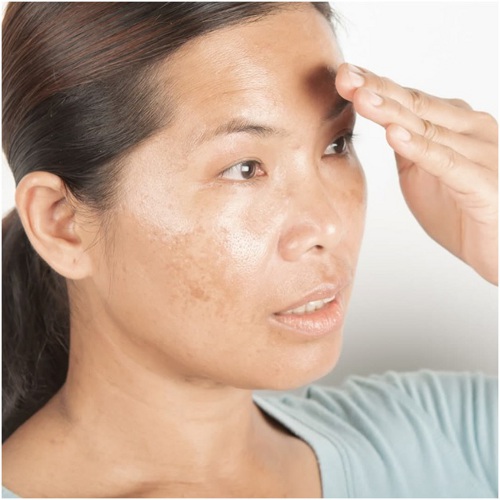Understanding Melasma and its Triggers
Melasma is a common skin condition characterized by patches of dark, hyperpigmented skin. Understanding the triggers of melasma is crucial in effectively managing the condition. Hormonal changes, such as those experienced during pregnancy or while taking hormonal medications, can contribute to the development of melasma. Sun exposure is another significant trigger, as ultraviolet (UV) radiation stimulates the production of melanin in your skin, which can lead to hyperpigmentation. Genetic tendencies also play a vital role, making some individuals more susceptible to melasma than others.


Other factors, like certain medications, cosmetics, and even emotional stress, can potentially trigger or worsen melasma. In this comprehensive guide, we will explore topical treatments for melasma, including hydroquinone, retinoids, corticosteroids, and botanical extracts. These treatments aim to lighten hyperpigmentation, inhibit melanin production, and promote skin health. Understanding their benefits, considerations, and proper usage is crucial for individuals seeking relief from melasma and its associated concerns.
Overview of Melasma Treatments
Melasma treatments (علاج للكلف في الرياض) is an essential part of the comprehensive approach to managing melasma. These treatments can be procedures performed by your dermatologist or topical treatments that are applied directly to the skin and aim to lighten hyperpigmentation, inhibit melanin production, and promote overall skin health. Melasma treatments are available in various forms, such as creams, lotions, gels, and serums.
Understanding Melasma and its Triggers
Melasma is a common skin condition characterized by patches of dark, hyperpigmented skin. Understanding the triggers of melasma is crucial in effectively managing the condition. Hormonal changes, such as those experienced during pregnancy or while taking hormonal medications, can contribute to the development of melasma. Sun exposure is another significant trigger, as ultraviolet (UV) radiation stimulates the production of melanin, leading to hyperpigmentation. Genetic predisposition also plays a role, making some individuals more susceptible to melasma than others. Other factors, like certain medications, cosmetics, and even emotional stress, can potentially trigger or worsen melasma.
Hydroquinone: The Gold Standard
Hydroquinone is considered the gold standard in topical treatment for melasma. It works by inhibiting the production of melanin, the pigment responsible for skin color. By reducing melanin production, hydroquinone effectively lightens hyperpigmented areas over time. However, it is crucial to use hydroquinone under the guidance of a healthcare professional due to potential side effects, such as skin irritation and post-inflammatory hyperpigmentation. Additionally, long-term use should be monitored, and it is advisable to take breaks from hydroquinone to avoid skin sensitivity.
Retinoids: Regulating Skin Cell Turnover
Retinoids are another class of topical treatments commonly used in the management of melasma. These vitamin A derivatives work by regulating skin cell turnover, promoting the shedding of pigmented cells, and encouraging the growth of new, healthy cells. Tretinoin and adapalene are commonly prescribed retinoids for melasma treatment. They help fade hyperpigmentation, improve skin texture, and enhance overall skin health. However, retinoids can cause skin dryness, redness, and sensitivity, especially during the initial stages of treatment. Therefore, it is important to start with a low concentration and gradually increase as tolerated.
Corticosteroids: Anti-inflammatory Approach
Corticosteroids, specifically topical corticosteroids, are sometimes used in the treatment of melasma due to their anti-inflammatory properties. These medications help reduce inflammation and suppress the activity of melanocytes, the cells responsible for producing melanin. While corticosteroids can effectively lighten pigmentation, they are typically used as short-term treatment options.
Botanical Extracts and Other Active Ingredients
In addition to other active substances, botanical extracts such as licorice extract from the licorice plant and kojic acid from fungus provide alternative treatment choices for melasma. By preventing the synthesis of melanin, kojic acid reduces hyperpigmentation. Azelaic acid improves the look of melasma by reducing aberrant melanocyte proliferation and inflammation. Licorice extract also exhibits potential.
Conclusion
In conclusion, topical treatments play a significant role in the comprehensive management of melasma. Understanding the triggers of melasma, such as hormonal changes and sun exposure, is crucial in effectively addressing the condition. Hydroquinone remains the gold standard for melasma treatment, effectively reducing hyperpigmentation by inhibiting melanin production. Retinoids regulate skin cell turnover, promoting the fading of pigmented areas and improving overall skin texture. Corticosteroids offer an anti-inflammatory approach, reducing inflammation and suppressing melanocyte activity. Additionally, botanical extracts and other active ingredients, such as kojic acid, azelaic acid, licorice extract, and vitamin C, provide additional options for treating melasma. By combining appropriate topical treatments with sun protection and lifestyle modifications, individuals with melasma can effectively manage the condition and achieve a more even skin tone.















